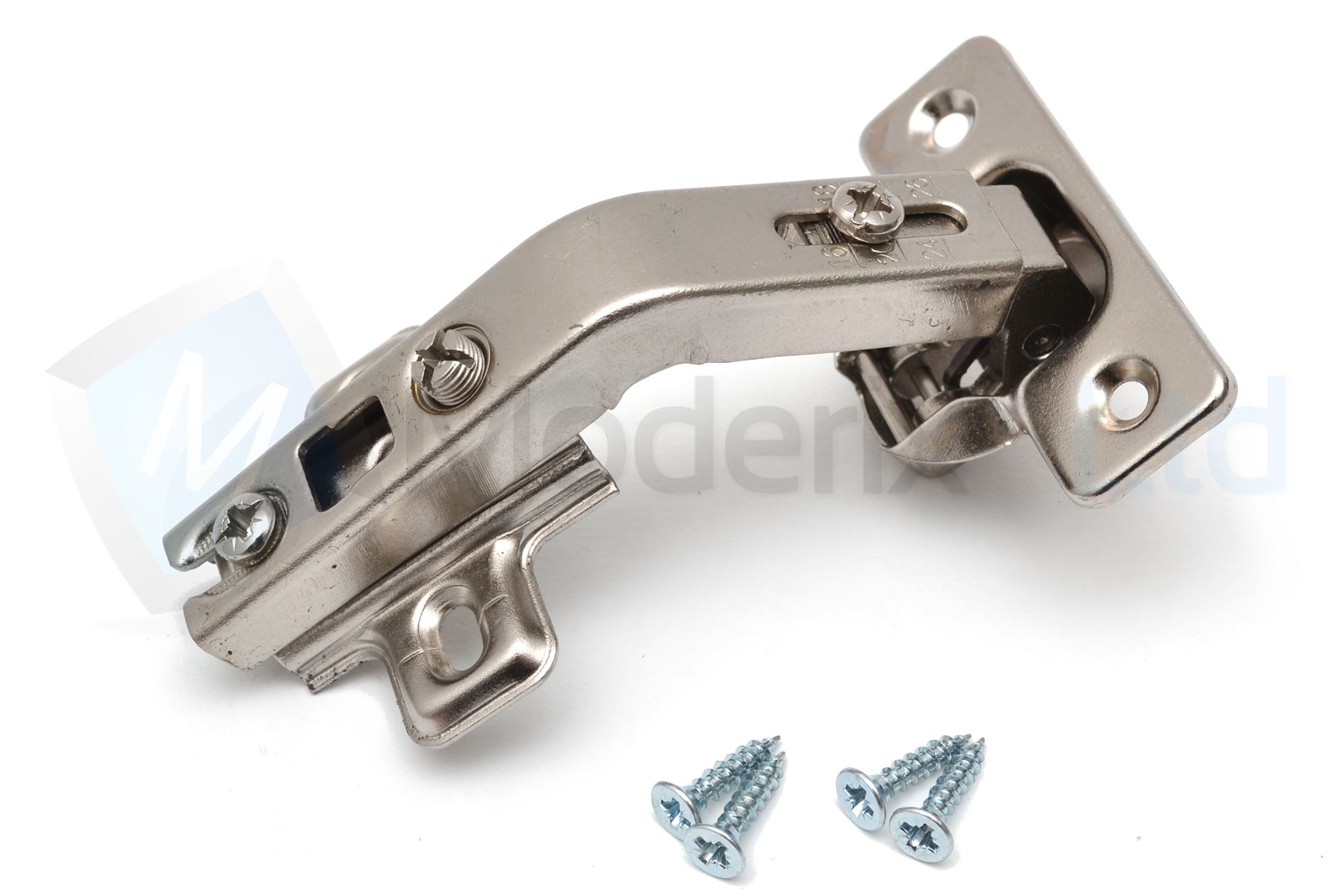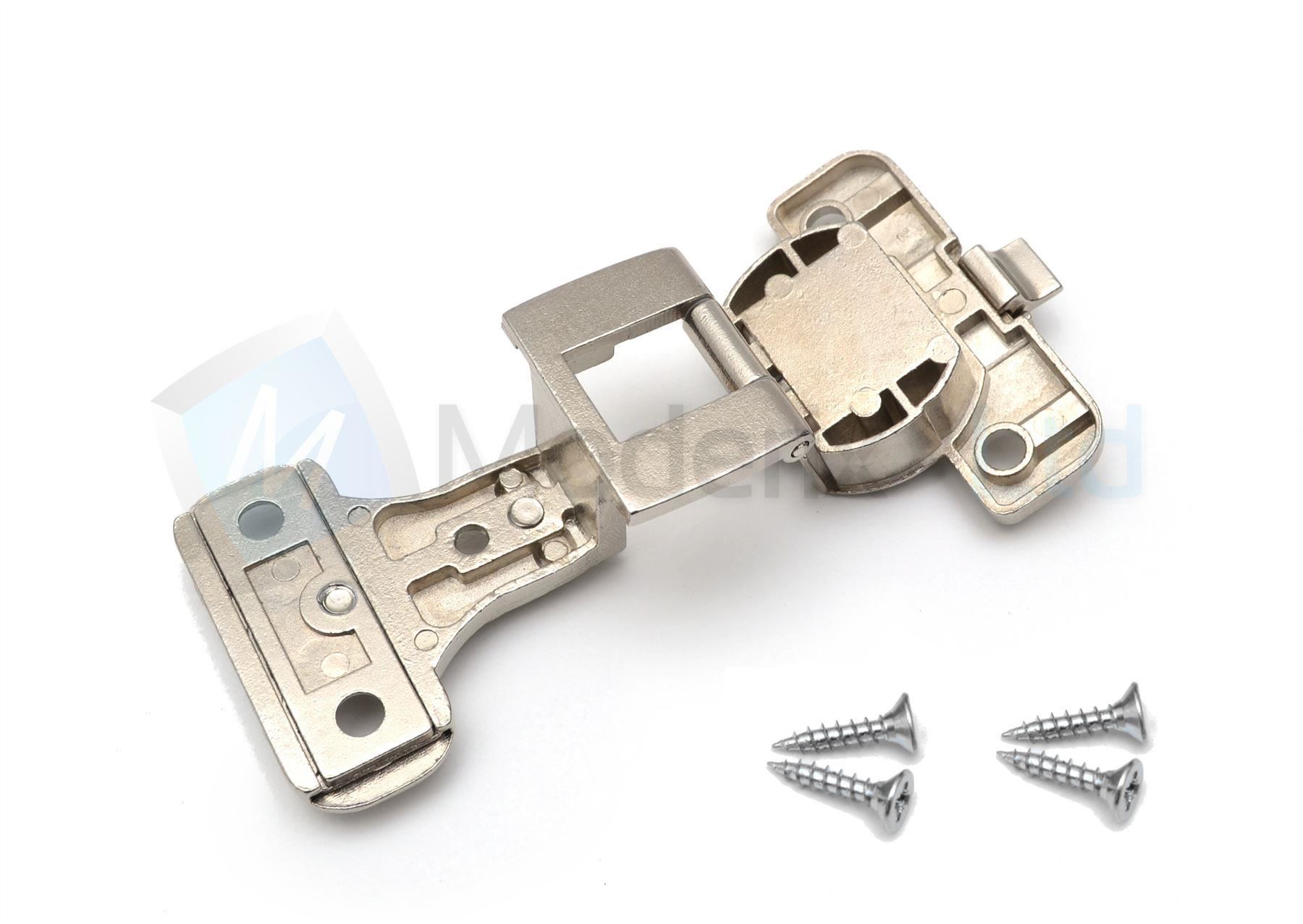Types and Styles of Bifold Cabinet Door Hinges

Choosing the right bifold cabinet door hinges is crucial for both functionality and aesthetics. The type of hinge you select will depend on your cabinet’s design, the weight of the doors, and your desired look. Several factors influence the selection process, including overlay type, material, and weight capacity.
Bifold Hinge Types Based on Overlay
Bifold hinges are categorized primarily by their overlay style: full overlay, half overlay, and inset. Full overlay hinges conceal the cabinet doors completely when closed, creating a clean, modern look. Half overlay hinges partially reveal the cabinet frame, offering a more traditional appearance. Inset hinges are used when the cabinet doors are recessed into the cabinet frame. The choice between these styles depends on the overall design of your kitchen or cabinetry.
Bifold Hinge Materials, Bifold cabinet door hinges
The material of the hinge significantly impacts its durability, aesthetic appeal, and cost. Common materials include steel, brass, and zinc alloy. Steel hinges are strong and durable, offering excellent weight capacity at a relatively low cost. Brass hinges provide a more luxurious look and are resistant to corrosion, making them suitable for humid environments. Zinc alloy hinges offer a balance between cost and durability, providing a decent weight capacity at a more affordable price point than brass.
Comparison of Bifold Hinge Styles and Functionality
Full overlay hinges are ideal for a contemporary kitchen design, maximizing cabinet face visibility and creating a sleek, minimalist appearance. They are often used in modern kitchens with frameless cabinetry. Half overlay hinges are a more classic choice, offering a balance between the clean lines of full overlay and the traditional look of inset doors. They are frequently used in kitchens with framed cabinetry. Inset hinges are suited for traditional or more ornate cabinetry, allowing the cabinet doors to sit flush with the frame. They provide a sophisticated, timeless look.
Bifold Hinge Comparison Table
| Hinge Type | Material | Application | Weight Capacity (approx.) | Cost (approx.) |
|---|---|---|---|---|
| Full Overlay | Steel | Modern, frameless cabinets | 25-35 lbs per door | $2-$5 per pair |
| Half Overlay | Zinc Alloy | Traditional, framed cabinets | 20-30 lbs per door | $3-$6 per pair |
| Inset | Brass | Traditional, ornate cabinets | 15-25 lbs per door | $5-$10 per pair |
| Full Overlay (Heavy Duty) | Steel | Large, heavy cabinet doors | 40-50 lbs per door | $8-$15 per pair |
Installation and Adjustment of Bifold Cabinet Door Hinges

Installing bifold cabinet door hinges might seem daunting, but with the right tools and a methodical approach, it’s a manageable DIY project. This section provides a step-by-step guide, troubleshooting tips, and advice on fine-tuning your hinges for a perfect fit and smooth operation. Remember safety first – always wear safety glasses and use caution when handling sharp tools.
Installing Bifold Cabinet Door Hinges
Proper hinge placement is crucial for a correctly functioning bifold door. Accurate measurements and careful attention to detail during installation will prevent future problems. The following steps Artikel the installation process.
- Prepare the Doors and Cabinet: Ensure your cabinet is clean and free of obstructions. Lightly sand any rough edges on the doors and cabinet frames to prevent splintering. Measure and mark the hinge locations on both the doors and the cabinet frame. Accurate measurements are essential for proper alignment.
- Attach the Hinge Plates: Using a drill with the appropriate sized drill bit, carefully create pilot holes for the hinge screws. This prevents splitting the wood. Then, attach the hinge plates to the doors and the cabinet frame using screws. Ensure the hinges are flush with the surface of the door and frame.
- Install the Hinge Pins: Insert the hinge pins into the hinges, connecting the door to the cabinet frame. Gently close the door to check alignment. If the alignment is off, you’ll need to adjust the hinges (see the next section).
- Secure the Doors: Once the alignment is correct, tighten all screws to secure the hinges firmly in place. Test the opening and closing mechanism of the bifold doors to ensure smooth operation.
Troubleshooting Common Installation Problems
Several issues can arise during installation. Addressing them promptly prevents frustration and ensures a successful outcome.
- Problem: Door doesn’t close flush. Solution: This often indicates misaligned hinges. Carefully check the hinge placement and use a screwdriver to slightly adjust the screws to realign the door. You may need to loosen some screws, reposition the door, and retighten.
- Problem: Door binds or sticks. Solution: This usually means the door is rubbing against the frame or another door. Check for any obstructions and use a wood plane or sandpaper to carefully remove any interfering material. You may also need to adjust the hinge placement slightly.
- Problem: Screws are stripping. Solution: Use a slightly larger drill bit to create a pilot hole before installing the screws. This will prevent the wood from splitting and the screws from stripping. If the screws are already stripped, you may need to use wood glue to fill the holes, let it dry, and then drill new pilot holes and install new screws.
Adjusting Bifold Cabinet Door Hinges
Fine-tuning hinge placement ensures smooth operation and a professional finish. Minor adjustments can significantly impact the door’s functionality.
Bifold cabinet door hinges – Most bifold hinges have adjustment screws. These screws allow for minor adjustments in three directions: up/down, in/out, and side-to-side. These adjustments are usually made by turning screws located on the hinge itself.
For example, if the door is too high, you would loosen the hinge screws slightly, then carefully lower the door and retighten the screws. If the door is too far forward, you’d loosen the screws and carefully push the door back, tightening again once the correct position is achieved. Side-to-side adjustments are made similarly, loosening the screws, moving the door, and tightening again.
Imagine a hinge with three small screws; one at the top, one at the bottom, and one on the side. The top screw controls vertical alignment, the bottom controls the gap between the door and the cabinet, and the side screw controls the alignment from left to right.
Maintenance and Repair of Bifold Cabinet Door Hinges

Keeping your bifold cabinet door hinges in good working order ensures smooth operation and extends the life of your cabinets. Regular maintenance is key to preventing problems and costly repairs down the line. Neglecting maintenance can lead to frustrating squeaks, sticking doors, and ultimately, hinge failure.
Maintaining Bifold Cabinet Door Hinges
Proper maintenance involves a simple routine of cleaning and lubrication. Start by wiping down the hinges with a damp cloth to remove dust and grime. Then, apply a small amount of light machine oil or silicone-based lubricant to the hinge pins and moving parts. Avoid using heavy grease, as this can attract more dirt and potentially gum up the mechanism. A yearly cleaning and lubrication is generally sufficient, but more frequent maintenance may be necessary in high-humidity environments or areas with heavy use. Remember to wipe away any excess lubricant after application to prevent dust build-up.
Common Causes of Bifold Hinge Failure
Several factors contribute to bifold hinge failure. Loose screws are a frequent culprit, leading to instability and eventual damage. Over time, the wood around the screw holes can become stripped, making the screws less effective. Another common problem is wear and tear on the hinge pins themselves. Years of opening and closing can cause them to become worn or bent, resulting in a loose or binding hinge. Finally, lack of lubrication can lead to increased friction and wear, accelerating the deterioration of the hinge components. Ignoring these issues will inevitably lead to more extensive problems and the need for replacements.
Troubleshooting Common Bifold Hinge Problems
A proactive approach to troubleshooting can save time and effort. Below is a list of common issues and their solutions.
- Problem: Door sticks or binds. Solution: Apply lubricant to the hinge pins and moving parts. Check for any obstructions preventing smooth movement. If the problem persists, the hinge may be misaligned; adjustment may be needed or hinge replacement may be necessary.
- Problem: Door sags. Solution: Tighten all screws on the hinges. If the screws are stripped, you may need to fill the holes with wood filler, let it dry, and then re-drill pilot holes for new screws. In extreme cases, hinge replacement might be required.
- Problem: Hinge is loose. Solution: Tighten the screws. If the screws are stripped, refer to the solution above. If the hinge itself is damaged or bent, replacement is necessary.
- Problem: Hinge is noisy (squeaking or creaking). Solution: Apply lubricant to the hinge pins and moving parts. If the noise persists, it might indicate a more serious issue requiring hinge adjustment or replacement.
- Problem: Door doesn’t close completely. Solution: Check for obstructions, adjust the hinges to ensure proper alignment, or tighten loose screws. If the problem persists, the hinges may be worn and require replacement.
